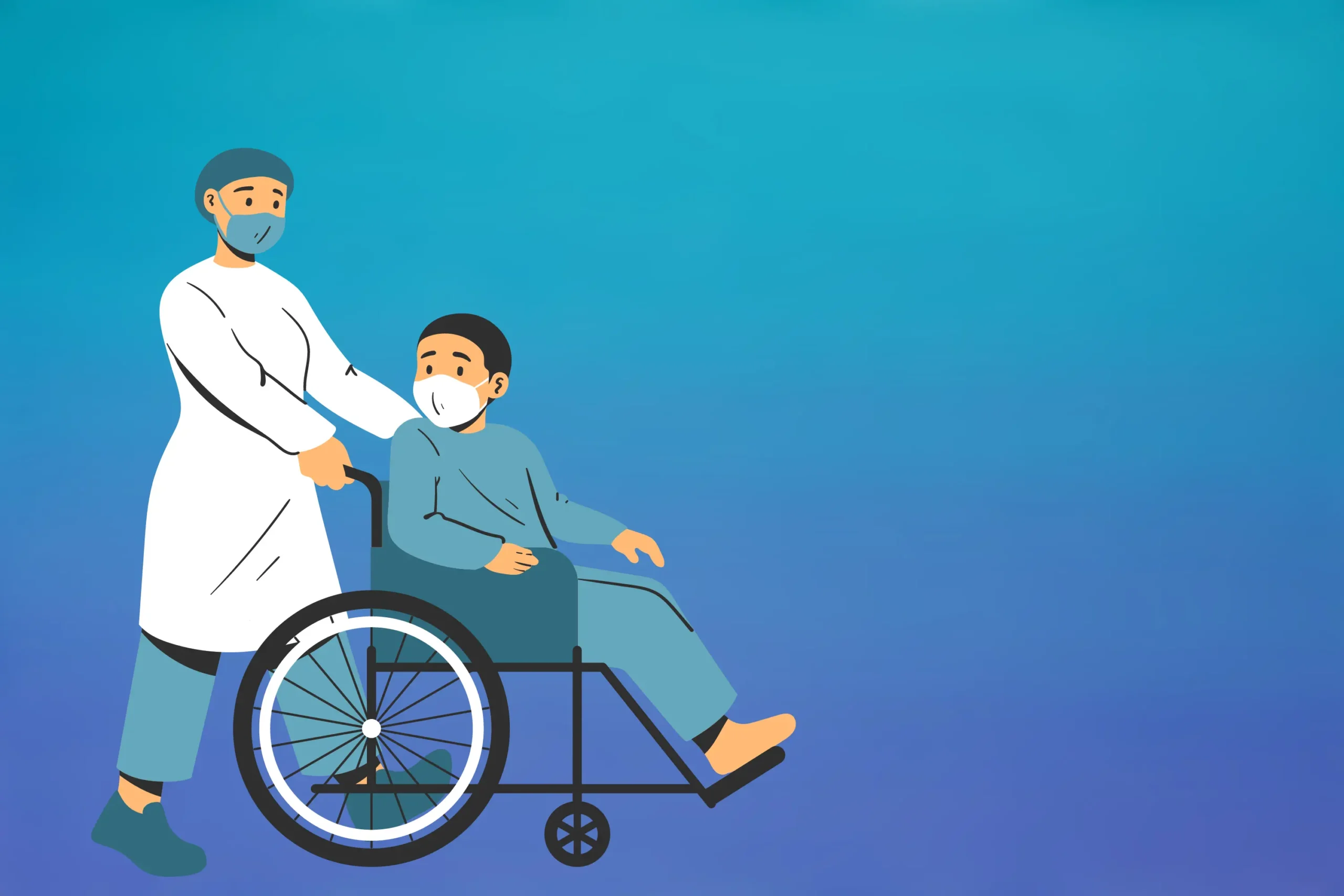At a glance:
- Mental health, heart attacks, cancer, pregnancy, and physical injuries are common TPD claims.
- Gather evidence, understand policy terms, seek advice, fill forms accurately, and submit comprehensive evidence.
- Lack of evidence, policy exclusions, incomplete documents, and claim deficiencies lead to rejections.
In life, unexpected events often happen, causing surprising changes and challenges along the way. For many Australians, navigating this uncertain terrain is a daily reality. In moments of unpredictability, Total and Permanent Disability (TPD) insurance emerges as a vital lifeline, offering security and support when the unexpected strikes.
Today, we embark on a journey to the heart of the matter, delving deep into the significance of TPD insurance in Australia. With a keen focus on understanding its pivotal role, we set our sights on exploring the most common TPD claims in this diverse and dynamic landscape. So, fasten your seatbelts as we unravel the intricacies of TPD insurance and uncover the stories behind its most prevalent claims.
Before we embark on this journey, let’s take a moment to understand what TPD truly means. TPD, or Total and Permanent Disability, is an insurance cover designed to provide financial support to individuals who, due to a severe injury or illness, are unable to work again. In Australia, where uncertainties can arise from various corners, TPD insurance offers a safety net to cushion the impact of life’s unexpected blows.
Lets dive into some of the most common TPD claims in Australia
Mental Health Conditions
In recent years, there has been a notable surge in TPD claims associated with mental health conditions, reflecting a broader societal shift towards increased awareness and acknowledgement of mental well-being. Within the landscape of TPD claims in Australia, mental health-related challenges such as anxiety, depression, and other psychological disorders have emerged as prominent factors influencing an individual’s capacity to maintain employment and financial stability.
In Australia, as in other countries, people’s views on mental health have changed a lot. There are efforts to make talking about mental health problems less stigmatised.
As a result, more individuals are seeking support and recognition for their mental health struggles, often manifesting in claims for Total and Permanent Disability insurance.
Stroke or Heart Attack
Cardiovascular events like strokes and heart attacks are prevalent causes for TPD claims in Australia. These emergencies impose physical, emotional, and financial burdens, rendering individuals unable to work. TPD coverage becomes essential for financial stability during incapacitation. The widespread impact of these conditions on workforce participation reflects the necessity of TPD insurance as a safety net. Proactive measures to promote cardiovascular health and workplace accommodations are crucial in mitigating risks.
Cancer
Cancer is a leading cause of TPD claims in Australia due to its profound impact on physical and mental health, often rendering individuals unable to work. The rising cancer incidence across all demographics highlights its pervasive effect on workforce participation. Symptoms ranging from fatigue to anxiety hinder job responsibilities, compounded by intensive treatments like chemotherapy.
TPD insurance serves as a crucial financial safety net during this challenging journey, providing support for lost income and medical expenses. Comprehensive support systems including healthcare access and workplace accommodations are crucial for alleviating the burdens faced by those affected by cancer in Australia.
Pregnancy
Pregnancy complications can lead to TPD claims in Australia, reflecting the diverse factors affecting workforce participation. Conditions such as gestational diabetes and preeclampsia can result in long-term health issues, rendering women unable to work. While less common, these claims underscore the need for comprehensive insurance coverage to address unexpected life events and provide financial support during challenging circumstances.
Post Traumatic Stress Disorder
PTSD is recognised for TPD claims in Australia due to its association with trauma and high-stress situations. The emotional toll of PTSD significantly impairs individuals’ ability to sustain employment, highlighting its importance among common TPD claims. Traumatic events lead to persistent symptoms affecting mental well-being and work performance. TPD insurance serves as crucial support for individuals with PTSD, emphasising the need for proactive measures to address mental health in disability insurance and provide necessary resources and accommodations.
Loss of Sight or Hearing
Loss of sight or hearing commonly results in successful TPD claims in Australia due to the significant impact on individuals’ daily lives and workability. These physical disabilities necessitate financial support through insurance to cope with lost income and medical expenses. Inclusive insurance policies and comprehensive support systems are crucial to address diverse disabilities and ensure full participation in society and the workforce.
Loss of Limb
Loss of limb due to traumatic incidents falls under TPD claims in Australia, requiring financial assistance to cope with the life-altering consequences. This disability significantly impacts individuals’ daily tasks and employability, necessitating support for medical expenses and lost income. TPD insurance plays a crucial role in providing financial stability and facilitating rehabilitation. Comprehensive support systems are essential to address the diverse challenges faced by individuals affected by limb loss and promote their inclusion in society and the workforce.
Physical Injuries
Physical injuries resulting in permanent disability are eligible for TPD claims in Australia, encompassing a range of conditions from spinal injuries to severe fractures. These injuries profoundly impact individuals’ ability to work and maintain livelihoods. TPD insurance provides crucial financial support for medical expenses, rehabilitation, and lost income. Comprehensive insurance coverage and proactive measures to prevent injuries are essential to support individuals affected by physical disabilities and facilitate their reintegration into society and the workforce.
Some other injuries and illnesses that qualify for a TPD claim
A wide range of injuries and illnesses, including neurological disorders, chronic illnesses, and respiratory conditions, qualify individuals for TPD claims in Australia. Examples include multiple sclerosis, rheumatoid arthritis, and chronic obstructive pulmonary disease. These conditions significantly impact daily functioning and may hinder employment. TPD insurance provides vital financial support for individuals facing these challenges, covering lost income, medical expenses, and rehabilitation costs.
Comprehensive insurance coverage and proactive support systems are essential to address the diverse needs of individuals affected by various injuries and illnesses, promoting their inclusion in society and the workforce.
How Many TPD Claims Are Successful?
The success of Total and Permanent Disability (TPD) claims in Australia depends on various factors, including the genuineness of the disability and the presence of all necessary supporting documents.
TPD claims are typically assessed based on the individual’s medical condition, its impact on their ability to work, and the extent to which it meets the criteria outlined in the insurance policy. As with any insurance claim, thorough documentation and evidence are crucial for a successful outcome. Ultimately, the determination of a TPD claim’s success rests on the adherence to established guidelines and the fulfilment of eligibility criteria.
How to Successfully Claim TPD
Successfully claiming Total and Permanent Disability (TPD) insurance in Australia involves:
Documenting Medical Evidence
Gather medical records and assessments to support the disability claim.
Understanding Policy Terms
Know the criteria for total and permanent disability outlined in the insurance policy.
Seeking Professional Advice
Consult legal or financial experts specialising in TPD claims for guidance.
Completing Documentation Correctly
Ensure all forms are accurately filled out to avoid delays.
Submitting Comprehensive Evidence:
Include witness statements, employment history, and financial records to strengthen the claim.
Communicating Effectively
Stay in touch with the insurance provider and respond promptly to requests for information.
Why Do TPD Claims Get Rejected?
TPD claims in Australia may face rejection for various reasons, often arising from deficiencies within the claim itself that fail to meet the objectives outlined by the insurance policy. Common reasons for claim rejection include insufficient medical evidence, policy exclusions, and incomplete documentation. It’s essential for applicants to understand these potential pitfalls to enhance the likelihood of a successful claim outcome.
What Is the Average Payout for TPD?
The average payout for Total and Permanent Disability (TPD) claims in Australia varies, but is generally substantial, serving as a vital financial safety net for individuals facing permanent disability. It covers expenses such as medical costs, living expenses, and rehabilitation services, providing comprehensive support. This payout acknowledges the significant challenges individuals and their families face and promotes financial security despite disability.
Total and Permanent Disability (TPD) insurance in Australia serves as a crucial lifeline for individuals facing unexpected challenges, offering security and support in times of adversity. From mental health conditions to physical disabilities and unforeseen medical issues, TPD insurance provides a safety net, ensuring financial stability and peace of mind.
Understanding common TPD claims, navigating the claims process successfully, and addressing reasons for claim rejections are key aspects highlighted. Despite challenges, the substantial average payout underscores the importance of insurance in providing financial security during life’s uncertainties. Ultimately, TPD insurance plays a vital role in fostering a more inclusive and compassionate society, where individuals facing disabilities can thrive with support and understanding.
For reliable TPD insurance tailored to your needs, contact Aspect Underwriting and secure your financial future today.






